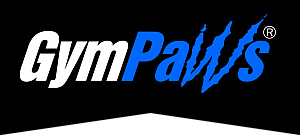
Bodyweight Inverted Row | Back Workout or Training For Pull Ups

EXERCISE DEMO VIDEO: When back and biceps day rolls around again try mixing up your back exercises by experimenting with some bodyweight moves. The Bodyweight Inverted Row is a pretty easy movement to master and it’s a great way to get an extra pump at the end of your workout, or really blast you lats and mid / upper back during your workout.
Training for Pull Ups 101
The Bodyweight Inverted Row exercise is a great addition to your overall back workout day, but it’s also an awesome move when training for pull ups. You’ll be strengthening your lats (latissimus dorsi) as well as serratus anterior muscle groups. You can find the previous 3 Training For Pull Ups Exercise Video Demo’s here: (links will open in new window)
Reverse Cable Fly – Low to High
Kneeling Lat Pull Down and Plank Extensions
Lats and Serratus Anterior Extensions
Bodyweight Inverted Row
You can use either a Smith Machine or a squat rack to do this exercise. Begin by positioning the bar at about chest level.
1. Grasp the bar with an overhanded grip (pronated grip) slightly wider than shoulder width apart. If you don’t have a pair of gloves for pull ups or workout gloves, you may want to try GymPaws® Leather Weight Lifting Grips. You’ll get a better grip on the bar and obviously avoid friction causing calluses.
2. Walk your body under the bar. Start the movement by retracting your shoulder blades back.
3. Exhale and while squeezing your shoulder blades together, pull yourself up to the bar. Keep you elbows tight to the body as you slowly lower yourself back down to complete one repetition.
Bodyweight Inverted Row Tips
– If the bar is higher on the rack, the weight load you’re “moving” will be lessened. The lower the bar, the more challenging the exercise becomes.
– The angle of the bar will determine which back muscles are targeted or recruited over others. For this exercise demo we’re showing how you can use this exercise to target the upper and middle back to help strengthen key muscle groups important when training for pull ups.




